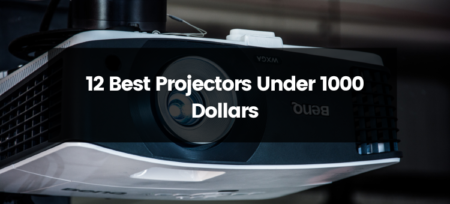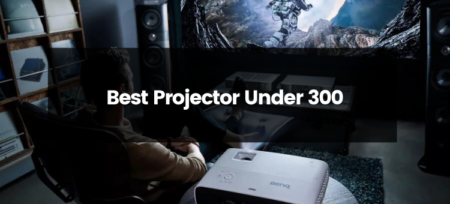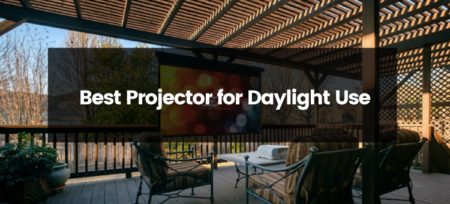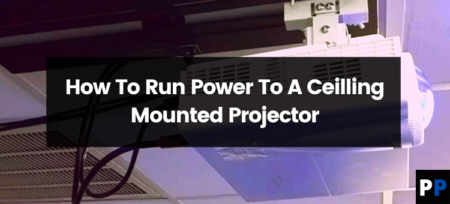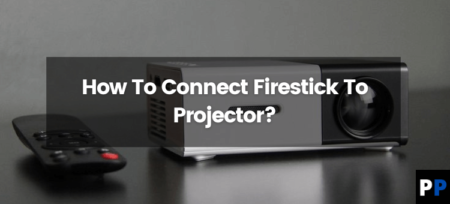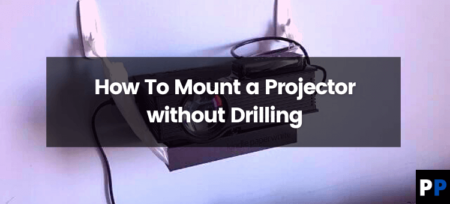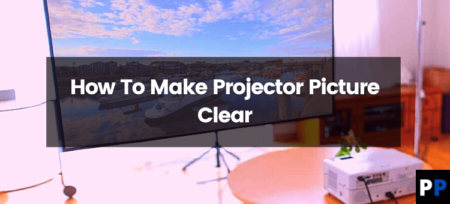A projector-based home theater is the most effective way to enjoy a big-screen experience within your home. Although it’s not hard to set up, you will need to think about different things you would do when creating a home theater built around a television.
This guide offers fundamental guidelines for setting up a home theater. The amount, number of combinations, and options for connecting are different according to the number and type of equipment you have, in addition to the room’s dimensions and form, lighting, and acoustic qualities.
Examine Your Space
Don’t forget to take into consideration where you’ll sit. The beam of light from the projector should be able to reach the screen transparently. If you’re planning to place your sofa between the screen and projector, consider how you’ll position the projector’s beam over everyone’s heads.
Ceiling-mounting is the best option for long-term installations, but you could use high shelves and furniture.
Choose The Right Screen
In a crisis, you can project the image using an LCD projector directly onto the wall or even an uncolored bedsheet. If you’re planning to set up your entire home theater, putting a chunk of your budget into the best screen is worthwhile.
The importance of the screen in the experience of watching cannot be overstated. There are a few homes with white, blank walls that are the exact size you’ll need for the projector screen. Many projector screens are specifically designed to increase the brightness or other aspects of image quality.
This is an enormous benefit in rooms with plenty of light sources or other limitations. Some have micro-perforations, so you can place speakers in front of the screen to create real-time surround sound.
Determine How You’ll Get Your Content
This is your area in your theater, and it will not change much when you switch from a TV to a projector. Choosing an appropriate projector for how you prefer to stream shows and films is essential. If you typically stream content using a streaming stick gaming console or set-top box or set-top box.
The standard HDMI input on every home theater projector will meet your requirements. There aren’t any options to use VGA, MHL, or wireless streaming on every projector but be sure to look for that option in case you require it.
Explore Your Sound Options
The speakers found on TVs are strong enough to give adequate sound for the average living space. Projectors are less powerful, but their tiny 10-watt speakers do not provide the same sound quality. The problem is made worse because the heat lamps inside projectors need cooling fans and generate some sound they produce on their own.
External speakers aren’t required for home theater systems based on television. However, they’re essential if using the projector. If your projector already has one, ensure that the one you purchase is compatible. At the very least, most projectors have a 3.5mm audio output. If you have an extra HDMI port on your projector, you could use it as an adapter for wireless to connect your speakers to Bluetooth.
Determine Your Budget and Buy Your Material
Write down everything you’ll need to purchase to make your own home theater a reality. This is the number of directions you’ll need to divide your budget. In the simplest case, you’ll require the projector and screen. It is also possible to purchase an audio system and peripheral equipment, such as an extra ceiling mount or cables.
- The projector is likely to make up the majority of your expenditure. These vary widely and range from basic models that cost around $100 to high-end Ultra HD 4K models priced at $2000 and more. In most households, a 1080p resolution projector priced between $500 and $1,000 is ideal for your needs.
- Screens can be found for the same amount of money and are affordable. White screen sizes 120″ to 150″ for most homes should be sufficient. You can locate an acceptable one in the $50 to $100 range. You should spend more only if you’re looking for additional features, such as high-contrast screens or behind-screen speakers.
- The price for your audio system is up to you. If you’re happy with the sound you hear from the speakers on your TV, then a basic 2.1 surround set-up (two bookshelf speakers and a subwoofer) will suffice. You can get decent speakers starting as low as $50.
- Don’t forget to include other accessories such as ceiling cables and mounts. They’re not expensive in their own right; most ceiling mounts cost between $25 to $50. Be aware that someone needs to set up this system as well.
- If you’re not a seasoned DIYer, this could be an area you’d like to delegate to a professional when you’re planning to run wires across the walls or interact with your home’s electrical system.
Connect All The Pieces
The decision as to whether you require professionals to install your projector is the main one in the installation. When you’re just mounting your projector, making it your own is no issue. Most mounting systems are easy enough to be done by anyone with only a little electronic and home repair skills.
Check that you have everything you’ll need and is ready to put together before beginning. It will go faster if you’ve got the right cables or screws and tools ready to go before you begin the project.
Also, you should take the time to go through your projector’s instruction manual. Connecting items in a particular order will ensure that they perform as expected when you turn on your system. This is especially crucial for ceiling-mounted systems as messing with them after installation is a pain.
Set Up The Projector
You will likely need to align and adjust the image on your projector to the correct size and be perfectly aligned with the screen. If you’re mounting the projector, do this before securing the device to be sure that you’re placing it in the correct position.
Place the projector on the top of a ladder to bring it up at the right level until you’re ready to set the appointment permanently. If the projector’s position is fixed due to space limitations, You can also put off mounting the screen and then alter the work to change the size of the image.
The kinds of adjustments you can make to the image will differ between projectors and include alignment, zoom, or inversion features. Many projectors have keystone adjustments that allow you to position the projector concerning the screen without creating a skew in the image. If it doesn’t require keystone adjustment, ensure that the lens is pointed head-on towards the net.
The adjustments you can make to the image may differ between different projectors and include zoom, alignment, or inversion options. Many projectors come with keystone adjustments that permit you to adjust the projector’s position about the screen without causing any skew to the image. If your projector does not require keystone adjustment, ensure the lens is pointed directly toward the net.
Finish The Installation
Always hang your screen. Place your projector in the mount if you’re planning to, and locate an appropriate long-term location for the speakers. Verify that there aren’t any cables or wires hanging loosely from the ceiling, draped over paths, or any other area. They could be a danger.
Check your sound and content sources.
Before calling the day off, make sure to ensure that everything has been set up correctly. Making sure you can fix any problems right away is much less stressful than learning the details while you sit watching your preferred show.
Play a game on your PlayStation or start a new program on Netflix using your FireStick or whatever you usually do while sitting to relax in your projector. Check that the picture and sound are functioning and aligned with all input channels before you can call it a day.
Things To Consider Before Setup Home Theater
There’s a good chance that you’ll have to rearrange things as you transition between television and the projector you have within your theater. There are two items you’ll be required to put before all other things you’ll be watching the projector itself.
One of the most significant differences when setting up a theater with a projector is how you approach lighting. Think about your light sources that aren’t mobile such as windows and permanently lit fixtures. The lower the amount of light pollution that reaches the lamp or screen, the more bright and sharper your image will appear.
The other significant difference can be found in the fact that it isn’t tied to the same size for your image. The chosen method determines the lamp’s brightness and the distance between screen and light. Most projectors have the potential to have a wide range of screen sizes, starting from as small as thirty” to as large as 300″.
The larger the screen, the more space you’ll need between the projector and the lamp, and the more vulnerable to light pollution will be. If you’re looking for a larger screen with a smaller area, choosing a shorter-throw projector is recommended, which may require spending a little more money.
Thank you so much for reading this article, I hope you like and it may help you in solving your problems. Take care

